AMD AM1 Kabini Part 2: Athlon 5350/5150 and Sempron 3850/2650 Tested
by Ian Cutress on May 29, 2014 2:00 PM ESTSynthetic IGP Benchmarks
Unity – Graphic Scene 720p: link
As part of my IGP testing I went searching for a couple of new Unity based benchmarks to help decipher the line between the desktop graphics solutions and those that are not so great. First up is a graphical humdinger, implementing a complex scene with lighting effects (including fluid simulation, shadows, SSAO, Bloom). We run the benchmark at 720p with the highest graphical settings, reporting the average FPS.
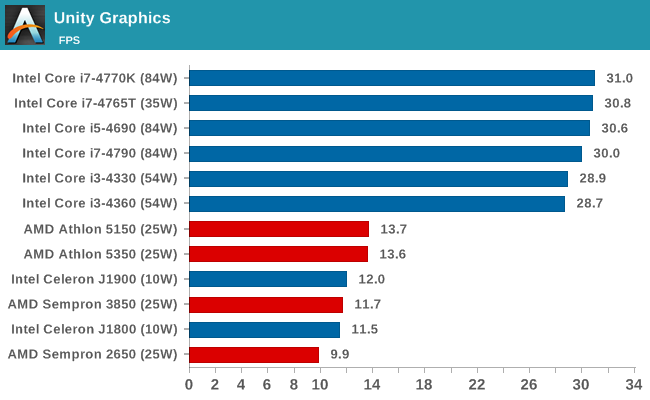
Unity – Draw Calls: link
Next up is a benchmark limited by draw calls rather than rendering complexity. The scene generates simple Nintendo Gamecube polygons that fall due to gravity and bounce around until stationary. The scene continuously spews out these polygons until three consecutive frames fall under a 20 FPS average. We run the benchmark at 720p at simple graphic settings to minimize the graphical complexity, and take the average of several runs.
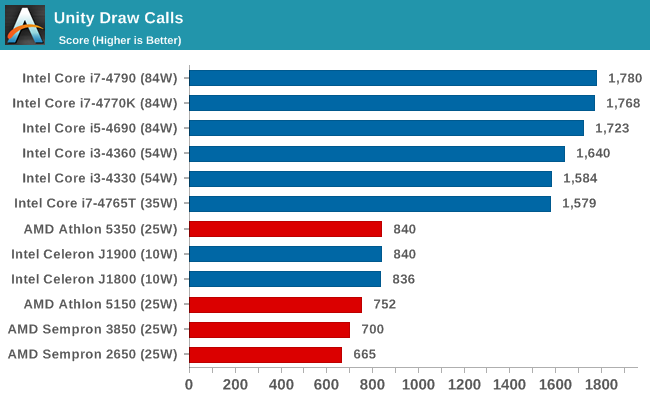
3DMark
The synthetic tools from Futuremark have been on the benchmarking landscape for over a decade, with each generation designed to tackle new problems as either the CPUs or GPUs become too powerful. Here we test 3DMark 06, 3DMark 11 (Performance), the latest 3DMark and 3DMark Vantage’s pixel/texel tests.
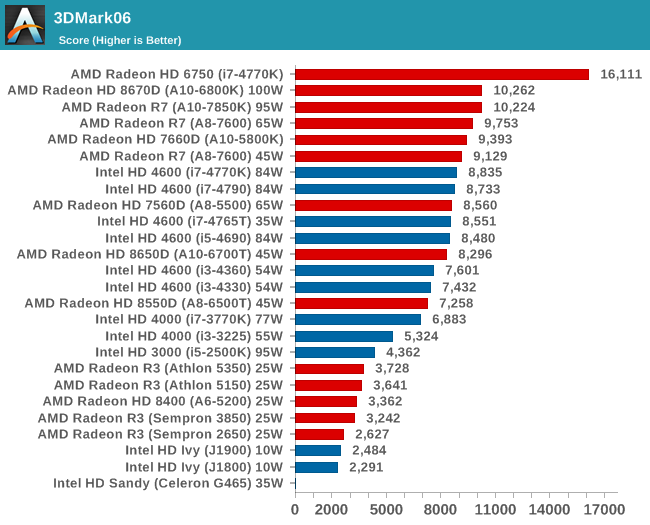
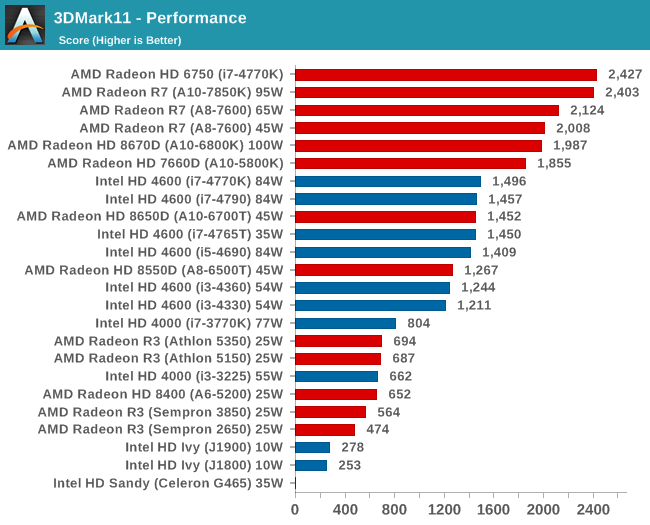
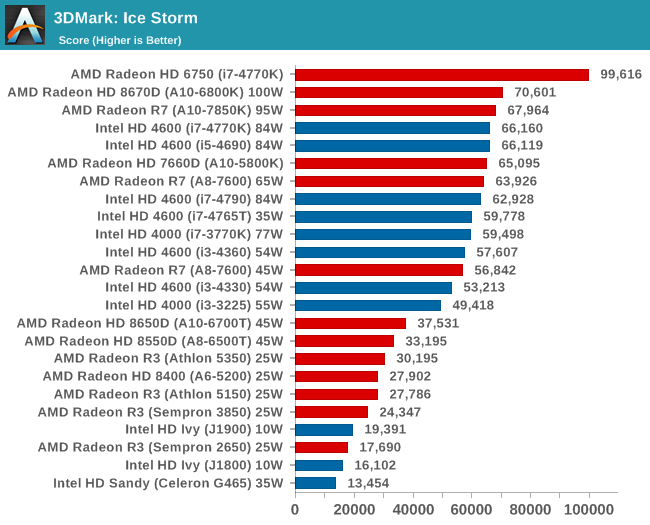

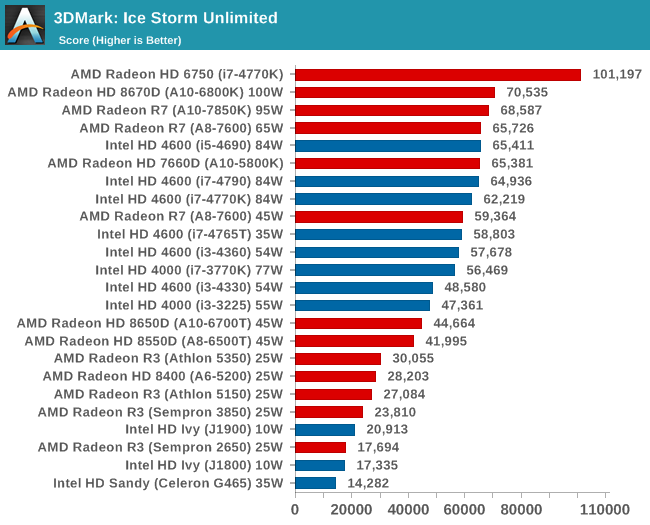
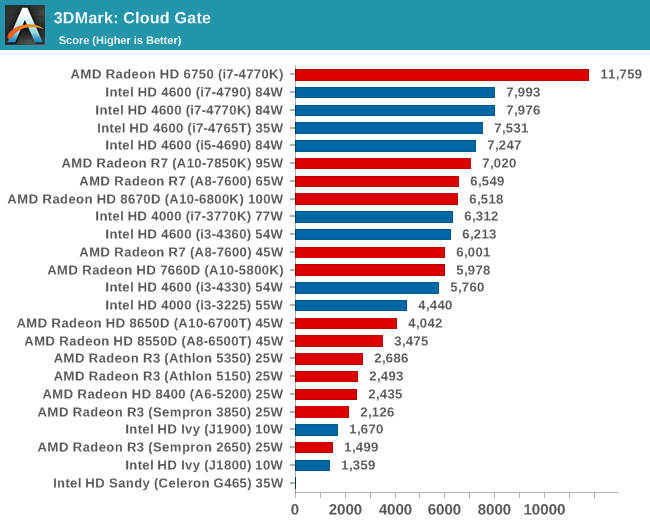
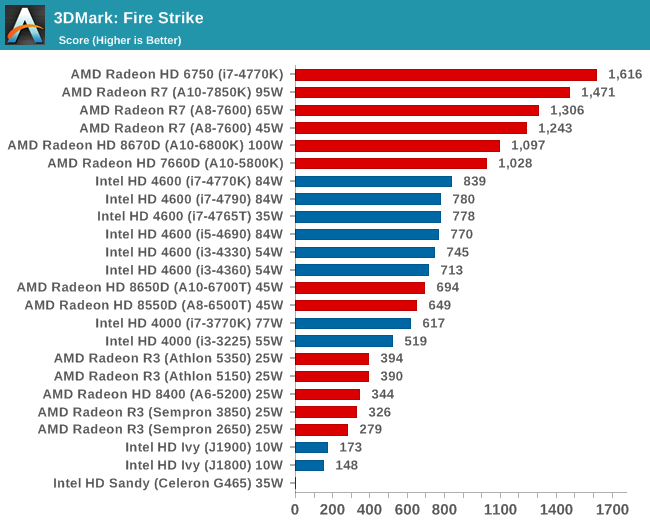

Tessmark
The latest version of TessMark is designed to focus on tessellation via OpenGL 4. We run the latest version of the benchmark using the high resolution map set at maximum tessellation while 1080p full screen, reporting the average FPS.
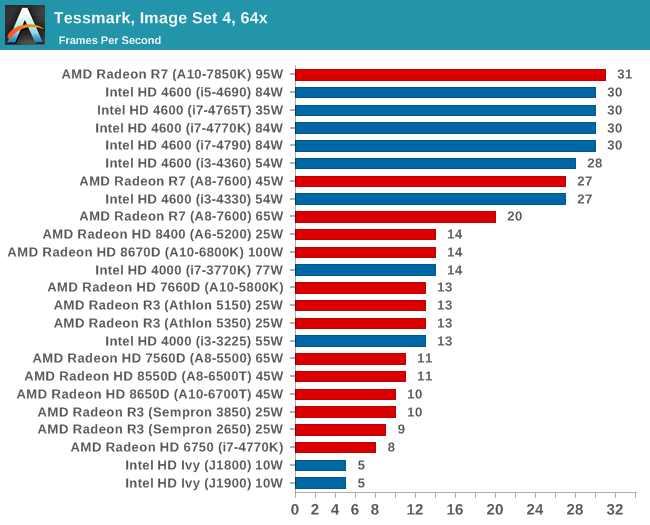










87 Comments
View All Comments
Silver47 - Thursday, May 29, 2014 - link
They are in the graphs, what are you smoking?Novaguy - Thursday, May 29, 2014 - link
I think using a weaker card for the dgpu would also have been interesting. Maybe something like an r7 270, 7750 or 7770.Also, what about Mantle benchmarks?
Novaguy - Thursday, May 29, 2014 - link
I meant r7 250, not 270... can't seem to edit via mobile.V900 - Friday, May 30, 2014 - link
No, no Mantle benchmarks... It's useless, and only serves to clutter the article.Hardly anybody cared about Mantle when it was announced... And now that we know the next version of Direct X is coming, the only people that care the slightest, are a handful of AMD fanbois.
silverblue - Friday, May 30, 2014 - link
You're entitled to your opinion. Let's look at it this way - DirectX 12 won't be here for another 18 months. Also, Mantle has been shown to perform better than AMD's own implementation of DX11 (and sometimes faster than NV's as well) and also helps with lower performing CPUs.The following link only shows the one game, but it should be enough to highlight the potential benefit of Mantle on a comparatively weak architecture such as Jaguar:
http://www.pcper.com/reviews/Graphics-Cards/AMD-Ma...
If you didn't need to upgrade your CPU to play the latest and greatest, I think you'd care, too.
formulav8 - Friday, May 30, 2014 - link
If Mantle was from NVidia or Intel you would be a bigger stooge than anyone AMD.Gauner - Thursday, May 29, 2014 - link
I think it would be far more useful for this weak systems to have a different set of game tests.No one will buy one of those to play tomb raider or bioshock but I'm guessing some people would consider buying one if you could play for example league of legends or dota2 at minimum and 720/1080p.
I understand it would mean an extra effort but right now the gaming tests don't really tell anything useful nor do they add useful information to other reviews by having an extra comparison.
Just taking into account steam games(since they are the easier ones to get data about) in the top 5 most played games daily you always have: dota2, CS:GO and TF2. Those 3 games used to run(poorly, 800x600, low detail, 20-30fps) in the old Intel GMA4500M so in my opinion they have a lot of people potentially interested in them and would run well enough in low power systems to give a useful comparison between chips.
res057 - Thursday, May 29, 2014 - link
Tests with high end games and cpu intensive tasks for processors such as these is like Car and Driver putting a Prius through quarter-mile test and comparing the results with a Corvette. Pointless.Gauner - Friday, May 30, 2014 - link
I can understand the logic behind CPU intensive tasks, even if you wont use this kind of CPUs to compress video with x264 you can watch the results and get a realistic estimation on the performance difference because the test is the same for both weak CPUs and high end CPUs.Problem with the gaming tests is that the comparison is with settings completely different from the high end tests so no parallelism there and with a set of games that no one would think to play in weak systems so there is no useful info given.
I cant look at the results and say "since tomb raider at 1280x1024 with low graphics ran at 20fps I guess league of legends will run at 1080p with medium graphics and 35fps", there are too many different points to make a comparison(AAA engine vs engine designed for low power computers, different resolution, completely different poly count and texture sizes, ...).
takeship - Friday, May 30, 2014 - link
I'm curious why no comparison with the old E-450/E-2000 Jaguar chips. Not so much for the CPU performance, but for the GPU improvements going to GCN.